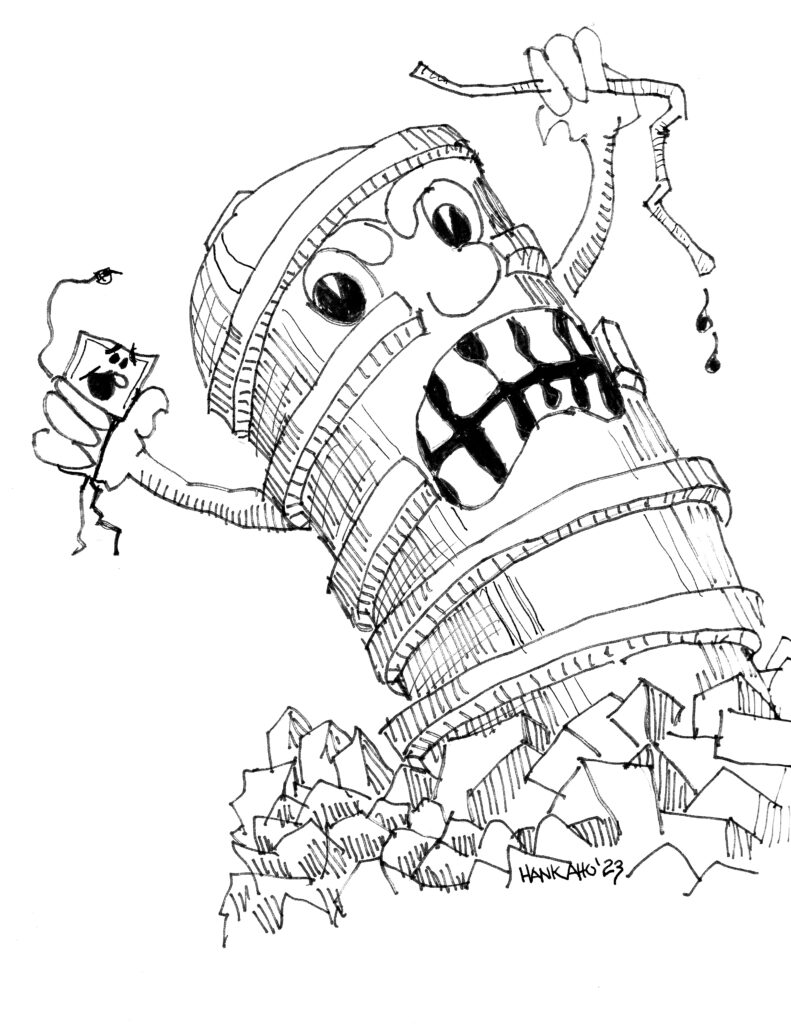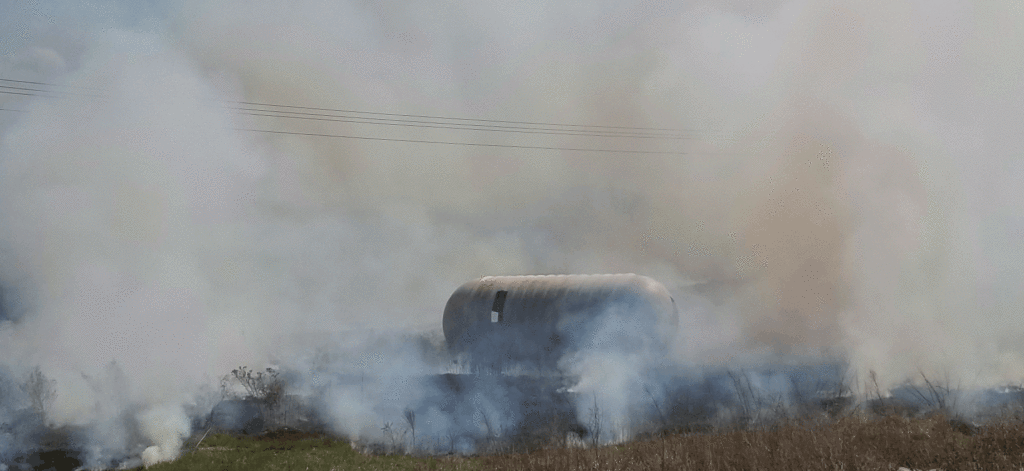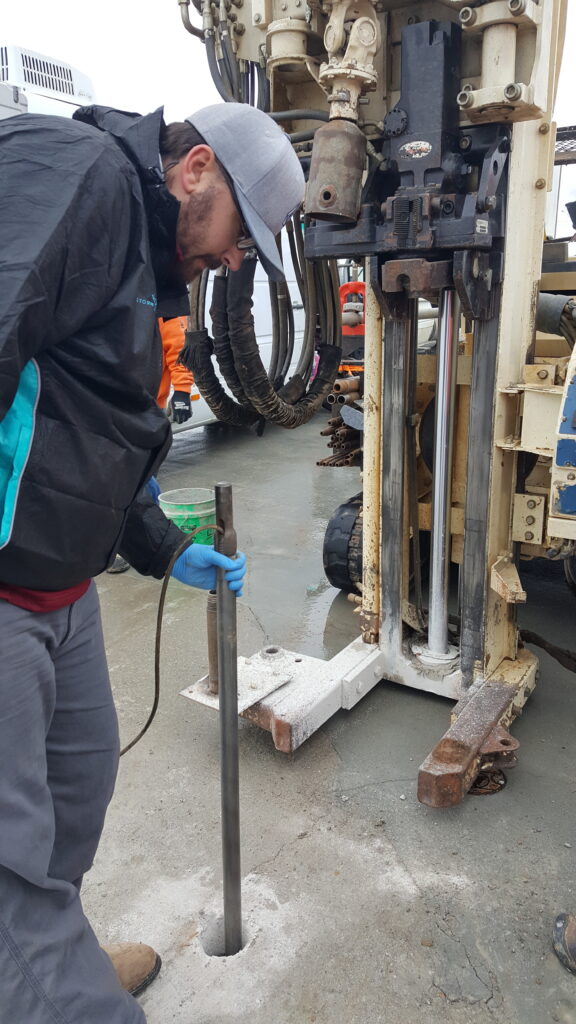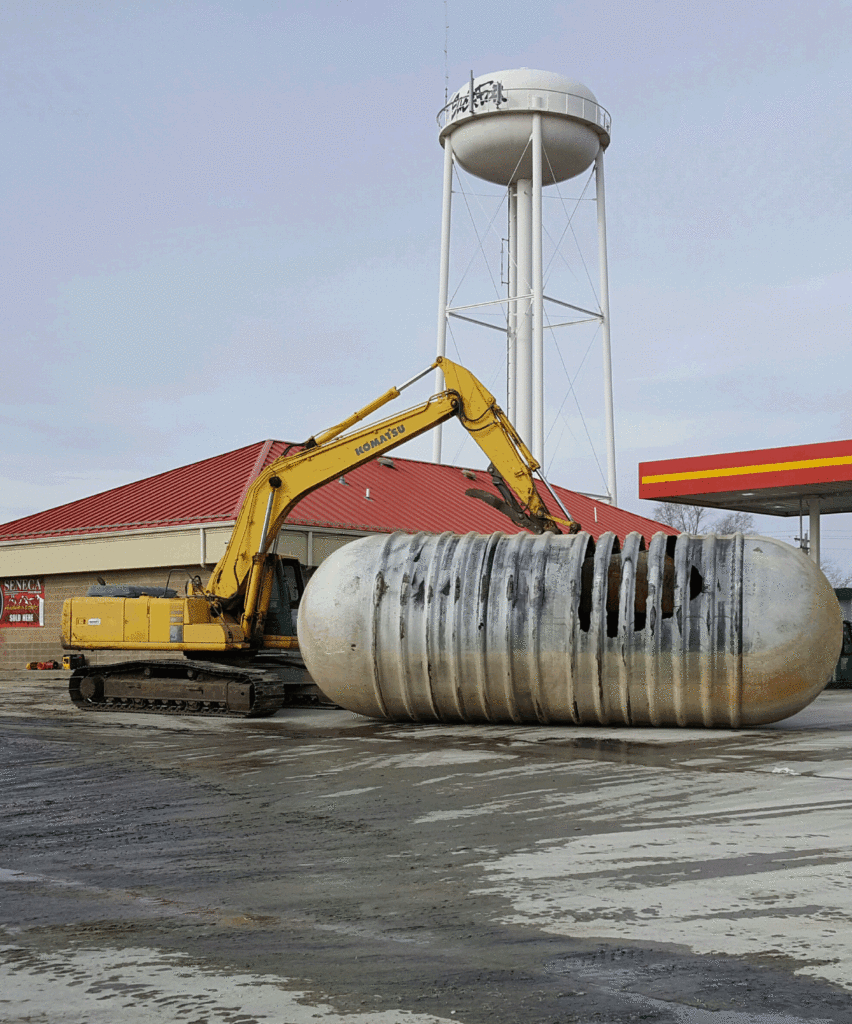By Mark Junker

This story could be a Russian epic: “All happy tanks are alike, but every unhappy tank is different in its own way.”
It could be an adventure: “Have fun storming the tank pit!”
This tale is rooted in science and philosophy, as the needs of the many outweighed the needs of the few. Nevertheless, this is a horror story. Like Dracula, it drained the lifeblood. While events did not unfold on Elm Street, Freddy Krueger would not be out of place. Our heads spun like a certain girl in “The Exorcist.” We could have been stunt doubles for a freezer-faced Jack Nicholson at the Overlook Hotel and, like our buddy Jason, the problem never seemed to die. Our leaking underground storage tank is today just a shell of itself, but it has passed on lessons that we can share.
The Sac and Fox Truck Stop is not the typical backdrop for macabre theatre, but on July 16, 2015, a series of events began that left the small Tribal Nation on the Kansas-Nebraska border questioning its sanity. It was a perfect Monday evening, with clear skies colored by one of those purple-orange sunsets that contrast the deep-green stalks of corn and the carpet of soybeans that make up the majority of the landscape between Topeka and Nebraska City.
Amanda Kramer, an assistant manager at the time, was captaining the truck stop that evening when the automatic tank gauge alarmed at 9:30 p.m. She immediately checked the ATG in the back room. Sandwiched between heavy, stacked boxes of concentrated soda products, the LED readout indicated water in the fuel. Her spot-on response was to hit the emergency shut-off, stopping any more product from flowing to the six dispensers on the west island of the truck stop. As she walked out the doors to notify the customers, a vehicle leaving the service island coughed, sputtered and died. The driver struggled to restart his car, to no avail.
Another patron tried to start her vehicle and it too was unable to turnover. In all, six vehicles were impacted by a yet-to-be-determined problem with the gas. Summoning her resources, Kramer brought in the Tribal Council and the Kickapoo fire and rescue squad. The Sac and Fox Truck Stop actually sits in a tiny cut-out of the Kickapoo Tribe of Kansas’ reservation and their response team is headquartered just eight miles away. The concern now shifted to what caused the alarm. Rising high above the darkened stretch of glacial till, anchored just 200 feet from the tank pit, a 7,000-gallon water tower emblazoned with the Sac and Fox logo seemed to be the logical culprit.

The initial assumption was that a main feeding the Brown County Kansas Rural Water District’s tower had failed, and water was somehow breeching the tank system via one or more of the utility lines within or adjacent to the tank basin.
A flurry of activity ensued as travelers whose cars had broken down were fed and boarded in nearby towns and their vehicles were towed to shops throughout the county. Water and electricity were both shut off at the truck stop and as night fell on the plains, a visual inspection of the tanks began in earnest. A flashlight down the fill ports of the three tanks located south of the truck stop revealed nothing to the eyes, but an audible rush echoing from the four-inch fill port confirmed water was indeed entering the tank.
It took another couple days for all hands to get on deck. Water-seeking paste on a measuring stick confirmed that only a small amount of ethanol-blended gasoline remained floating on top of a mid-grade tank that once held 7,500 gallons of product. One of the first calls made was for a pump and frac tank and those arrived on July 21. The giant, red fractioning tank with a capacity of 33,000 gallons was placed to the south side of the tank pit and, by the end of the day, held 19,000 gallons of water, gasoline and dissolved ethanol.
The source of water entering the tank was not drinking water destined for the tower or water from the tower feeding the truck stop and casino. It was obvious through process of elimination that the source was groundwater, but the mechanism for it getting into the tank was still unknown.

As the frac tank filled higher, a fellow from Tanknology arrived with a camera which he would use to determine the cause of the problem. Visibility was not great, but after several false starts and four hours of running the camera down all the tank’s openings, a picture emerged in sepia tones. Several feet to the east of the tank’s submersible turbine pump was a pile of gravel. Dimensions were difficult to calculate in this skewed perspective. The 12,000-gallon tank seemed vast, and distance is illusory when viewed through a tiny lens dangling from a fiberoptic fishing line.
The process of reading the images and obtaining an expert opinion took about two weeks. Eventually, it was calculated that the pile of gravel was about six feet long and two-and-a-half feet high and composed of the same pea gravel that was the recommended material used to fill the voids in the pit when the tank was installed.
Two other tanks shared the pit, and Tanknology determined that the failed tank was the northernmost one. The tank professionals also suggested that the middle tank be taken out of service due to its proximity to the failed tank and the instability of that particular side of the tank pit. The third tank was deemed stable enough to continue and the truck stop was able to continue selling fuel. However, operations were now becoming a bit constricted. A small fortress of gray, Lego-like cement blocks cordoned off the area surrounding the tanks. Typically, this was a key access point for customers entering and exiting the pumps and the store itself. Within a month, a second frac tank joined the full one, which would soon be joined by a third. With each new rain, the pump pulled more water from the pit. Each new investigation resulted in a fresh reconfiguration of the block maze. By November, five fresh monitoring wells dotted the property and a conceptual site model emerged.
Additionally, several off-site issues conspired to slow progress. The insurance company questioned expenditures and denied claims for actions taken in the immediate aftermath to protect human health and the environment. The decisions made by the experts brought in were second-guessed by the underwriters and progress was almost nonexistent.
Since the first picture of a gravel pile emerged from the abyss, it was assumed that a repair to the failed part of the tank would be the obvious remedy. These were original tanks installed in conjunction with the grand opening of the Sac and Fox Casino in the wake of the Indian Gaming Act in 1999. So, while the tanks were by no means new, the opinion was that a repair would be the fastest, most-efficient option to get the site up and running at full capacity. Tankers were making two deliveries a day, as the one tank left in operation was struggling to handle the throughput.
Records of the original tank install were nowhere to be found and the Tribal leader most associated with the new construction had journeyed on. Elders and long-time employees alike seemed to recall Xerxes tanks being ordered, but no actual invoice could be retrieved. Those were heady times back then, as operators throughout the country clamored for new tanks in reaction to new EPA regulations. Xerxes had no record of tanks being sent to Sac and Fox, but assigned a technician to be on- hand, along with an insurance company representative and a dozen other folks who had a dog in the fight when the pit was opened.

Fifteen months after the first engine flamed out under the canopy, the concrete cap above the tank pit was attacked by yellow iron and jackhammers. The eight-inch slab slowly gave way to the natural overburden. The product lines and utility trenches emerged as concrete rubble was carted off. The natural overburden and the gravel came into view and men with spades carefully excavated the engineered tank nest. Each shovelful brought hope of seeing the sweet curve of the buried behemoth. Progress was measured in small, painstaking spadesful as a cold December wind and leaden sky chilled the spectators.
Two hours in, a void appeared beneath one of the shovels and hands reached out to finally touch the muddy brown surface of the tank. Rubbing away the dust and grime, the great white whale at last revealed herself. That’s right: white.
Not the bullseye red of the Xerxes brand. Maybe it had been bleached; perhaps some re-dox process involving minerals in the ground water had discolored it. The pace quickened as more and more surface area was exposed. At last, the serial number and manufacturer of the tank was laid bare for the world to see: “CONTAINMENT SOLUTIONS, TULSA OK.”
The gathered crowd was dumbfounded save the Xerxes tech who, knowing his work here was done, left the scene before the noon whistle had finished announcing lunchtime.
Work ceased until a new set of players could be briefed and readied for battle. This time, there would be no repair. The sarcophagus had betrayed its condition enough that it was determined no human power could restore it to functionality. A new tank would replace it.
When finally removed from the pit, the full nature of the tank’s demise became evident. Six ribs had become delaminated. It turns out a single-walled tank had been substituted for the original design when timely delivery would forestall the grand opening of the truck stop and casino. Ironically, just two days after it was discovered to not be a Xerxes tank, a clerk delving through some old Tribal Council records in a storage area found some Polaroids of the original tank install. A filing glitch had cost us nearly two years, but fortunately no more than that.

The battle commenced again, but now on two fronts. On the first, data was collected as to why the fiberglass delaminated and on the other, the goal of developing a useful conceptual site model was rejoined. In addition, cleanup of free product never ceased. Over 100,000 gallons of contaminated water was shipped off to Indianapolis for treatment and nearly 2,500 gallons of fuel were recovered floating on top of the frac tanks. Monitoring wells were dug in earnest, 25 boreholes were drilled for membrane interface probes, and our understanding of the site evolved as, over the next 18 months, data was collected and analyzed.
If there is a bright spot in this saga, it is that the site has virtually no receptors. The pond due east of the parking lot is for stormwater retention, and the impacted soil is far below where anyone will come into contact with it.
What was discovered through old-school monitoring wells and high-resolution site characterization techniques is now well understood. The quick response and subsequent recovery actions resulted in all but approximately 400 gallons of the original 5,500 gallons being accounted for. The remaining product is trapped in a source area and plume that, like the work done up to this point, is moving slowly: the rate is estimated at 50-200 feet per year. Monitoring wells 300 feet from the source zone are still non-detect. The product is trapped between clay layers in sand at a depth of 12-18 feet. There is no data supporting any vapor intrusion even though the entirety of the truck stop’s south wall sits on the north edge of the source zone. The reason the tank failed is known, but we do not speak of it.
There are a number of ways that this site can now achieve closure. Each has merit as well as reasons for disqualification. Excavation in the source zone would deal a fatal blow to any plume migration but is costly. It would also shut down business for up to a month; create the additional headache of land-farming contaminated soil; consume fuel to power the digging machines, ferry workers and trucks; and arguably create more pollution than it actually cleans up. Cost estimates vary depending on the size of the hole but range from $400,000 for a 50-by-50-foot pit to $1.2 million for a 100-by-100-foot gouge out of the earth. At one time, bioremediation and a semipermeable membrane each had their allure, but once again cost, and the tradeoff between pollution created versus mess cleaned, give reason for pause.
The source zone is being depleted and the product is naturally attenuating. What has yet to be determined is the actual rate at which this process is occurring. As we enter the seventh year of this ordeal, everyone invested is eager to see some sort of resolution. Like Fred and Velma, the insurance company has long since parted ways with the Tribe and the Sac and Fox, in true Scooby Doo fashion, are wandering around in a sometimes comical — but thankfully no longer sinister — drama that will come to a resolution and final cleanup action plan soon.
This article was originally published in issue #92 of LUSTLine.